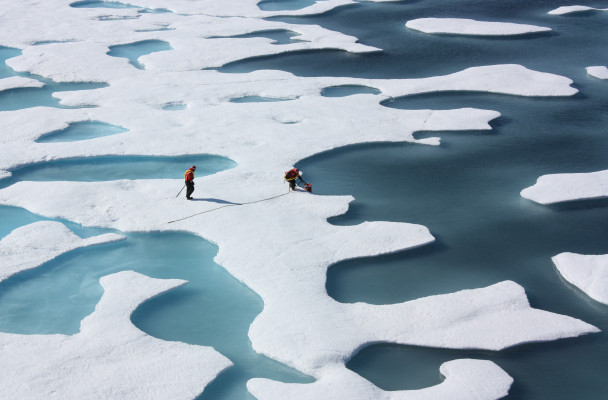
The North Pole is melting. Or so say many news outlets. But Walt Meier, a research scientist for NASA and a co-author of the National Oceanic and Atmospheric Administration’s 2015 Arctic Report Card on Sea Ice, says that’s not quite accurate.
“I’ve seen stories on that, and they’re kind of misleading,” Meier said.
Meier explains that what’s actually happening is a strong low pressure over Iceland is funneling warm air up into the Arctic and toward the North Pole, resulting in air temperatures slightly above freezing.
While Meier does say that much of the media’s coverage about the melting at the North Pole is overblown, temperatures are generally much lower this time of year.
“You’re normally at -20, -30 degrees Celsius up at the North Pole at this time of year,” Meier explains, “so that’s a really anomalously warm weather system that’s moving through there.”
Although there aren’t records that show how often something like this has happened in the past, there are records that indicate a warming climate.
According to both NASA and NOAA scientists, 2014 was the warmest year since 1880, and 2015 is on track to be even warmer. While the rest of the world has warmed by an average of 1.4 degrees Fahrenheit, the Arctic has warmed by twice as much.
Despite a history of rising temperatures and an anomaly of warm air funneling up from Iceland, Meier clarifies that the North Pole hasn’t turned to slush quite yet.
“When you have temperatures like that, you would have some surface melt, but you know it’s still ice covered,” he said.
Meier says there’s probably still 6 to 8 feet of ice at the pole.
The low pressure causing the spike in temperatures at the North Pole is the same weather system that recently led to blizzards in the southwest, tornadoes in Texas and flooding in the Midwest.
The system is expected to move off the pole by next week, bringing temperatures back down to the normal -25 degrees Celsius.
